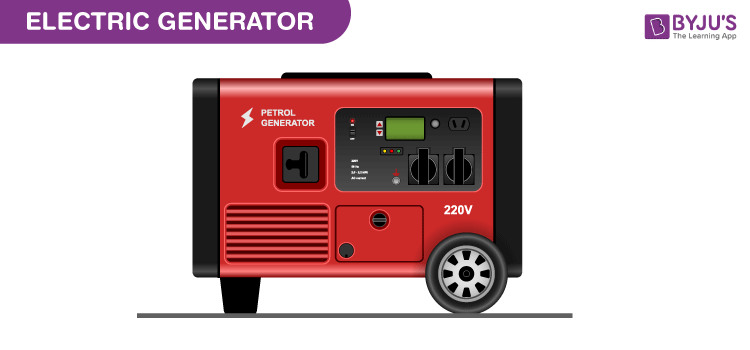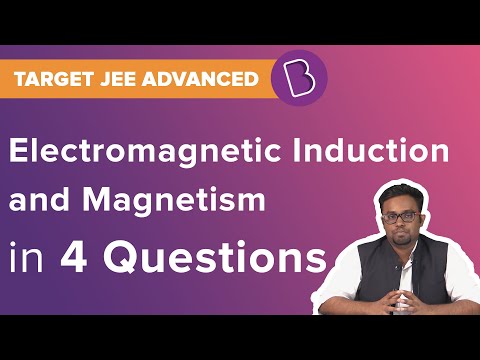What Is an Electric Generator?
Electric generators, also known as dynamos is an electric machine that converts mechanical energy into electrical energy. The electric generator’s mechanical energy is usually provided by steam turbines, gas turbines, and wind turbines. Electrical generators provide nearly all the power that is required for electric power grids.

The reverse conversion of electrical energy to mechanical energy is done by an electric motor. Both motors and generators have many similarities. But in this, the article let us focus mainly on electric generators and how they convert mechanical energy to electrical energy.
If you are interested to read more about the electric motor, click on the link provided below:
History of Electric Generators
Electrostatic generators were used before the relationship between electricity and magnetism was discovered. These generators operated on electrostatic principles. Electrostatic generators were never used for generation of commercially significant quantities of electric power due to the following reasons:
- Due to the difficulty in insulating machines that produced high voltages
- Due to the low power rating
Due to this inefficiency of electrostatic generators, the first electromagnetic generator, the Faraday disk, was invented in 1831 by British scientist Michael Faraday.
How do Generators create Electricity?
Generators do not create electricity instead it uses the mechanical energy supplied to it to force the movement of electric charges present in the wire of its windings through an external electric circuit. This flow of electrons constitutes the output electric current supplied by the generator.
The modern-day generators work on the principle of electromagnetic induction discovered by Michael Faraday. He realized that the above flow of current can be created by moving an electrical conductor in a magnetic field. This movement creates a voltage difference between the two ends of the conductor which causes the electric charges to flow, hence generating electric current.
Components of an Electric Generator
The main components of an electric generator are given below
- The Frame – the structure
- An Engine – the source of mechanical energy
- The Alternator – produces an electrical output from the mechanical input
- A Fuel System – to keep the generator operational
- A Voltage Regulator – to regulate the voltage output
- A Cooling System – to regulate heat levels that build up in the system
- A Lubrication System – for durable and smooth operations over a span
- An Exhaust System – to dispose of the waste exhaust gases produced in the process
- A Charger – to keep the battery of the generator charged
- Main Control – the control panel controlling generator interface
Read More: Electrical Energy
Types of Electric Generators
The classification of electric generators depends on the type of electrical energy that is produced, which is either direct current or alternating current.
- AC generators: AC generators are known as single-phase generators and are limited to 25 kW.
- DC generators: These generators are divided into three categories, and they are shunt, series, and compound-wound. Shunt generators are used in battery chargers. Series generators are used in street lights. While most of the DC generators are compound-wound.
If you wish to read more about AC Generators and DC Generators, click on the link below:
Uses of an Electric Generator
- They provide the power for most power networks across cities
- Small scale generators provide a good backup for household power needs or small businesses
- At construction sites, before the power is set up, they extensively make use of electric generators
- Energy-efficient as fuel consumption is reduced drastically
- Since they give a range of voltage output, they are used in labs
- They are used to drive motors
- They are used in transportation
Below is a video explaining the problems with solutions related to electromagnetic induction

Related Articles:
| Difference Between Motor and Generator |
| Generators and Transformers |
Frequently Asked Questions – FAQs
Can a generator be used as a motor?
In principle, any electrical generator can also serve as an electric motor or vice versa.
What kind of power does a generator produce?
Generators produce both AC and DC depending on its construction and the requirement.
What is an AC generator?
An AC generator is an electrical device that converts mechanical energy into electrical energy in the form of alternative emf or alternating current.
What is a DC generator?
A DC generator is an electrical machine that converts mechanical energy into DC (direct current) electricity.
How does the water stored in dams generate electricity?
The water stored in dams contains huge amounts of potential energy stored in it. When the dam gates are opened, the stored potential energy is converted into kinetic energy. This kinetic energy rotates the shaft of the generators and produces electricity.
Define electric generator.
An electric generator (dynamo) is defined as an electric machine that transforms a mechanical form of energy into electrical energy.
Which are the common sources of large scale mechanical energy?
Wind turbines, steam turbines, and gas turbines are the common sources of large scale mechanical energy.
Which type of generators were used when the connection between magnetism and electricity was discovered?
Electrostatic generators were used when the connection between magnetism and electricity was discovered.
What is the fundamental principle behind electric generators?
Electromagnetic induction is the fundamental principle behind electric generators.
Who discovered electromagnetic induction?
Michael Faraday discovered electromagnetic induction.
What are the components of an electric generator?
The components of an electric generator are an engine, a frame, an alternator, a fuel system, a voltage regulator, a cooling system, a lubrication system, an exhaust system, a central control panel, and a charger.
What are the two types of electric generators?
The two types of electric generators are AC generators, and DC generators are the two types of electric generators.
Stay tuned to BYJU’S and Fall in Love with Learning!


Amazing app